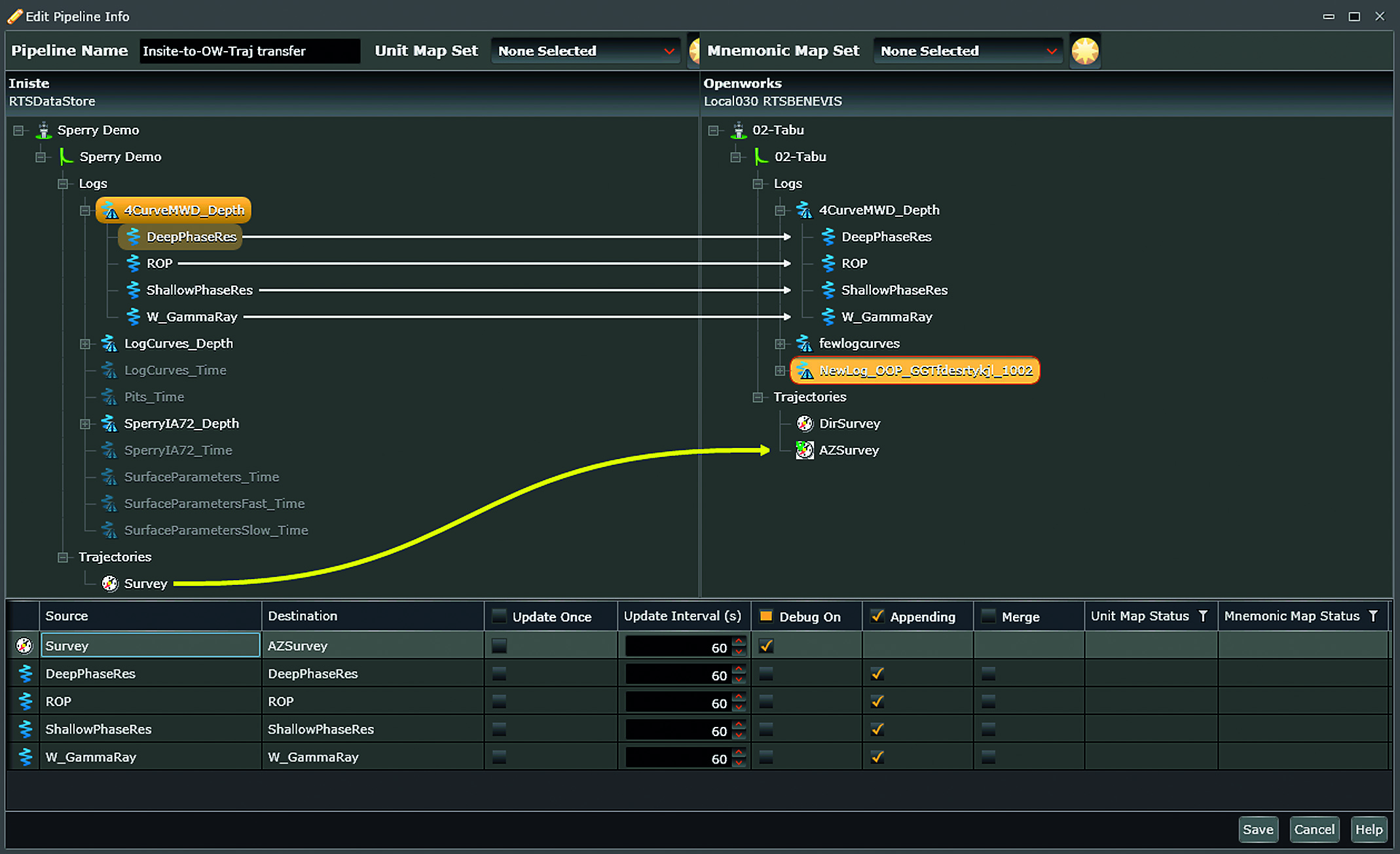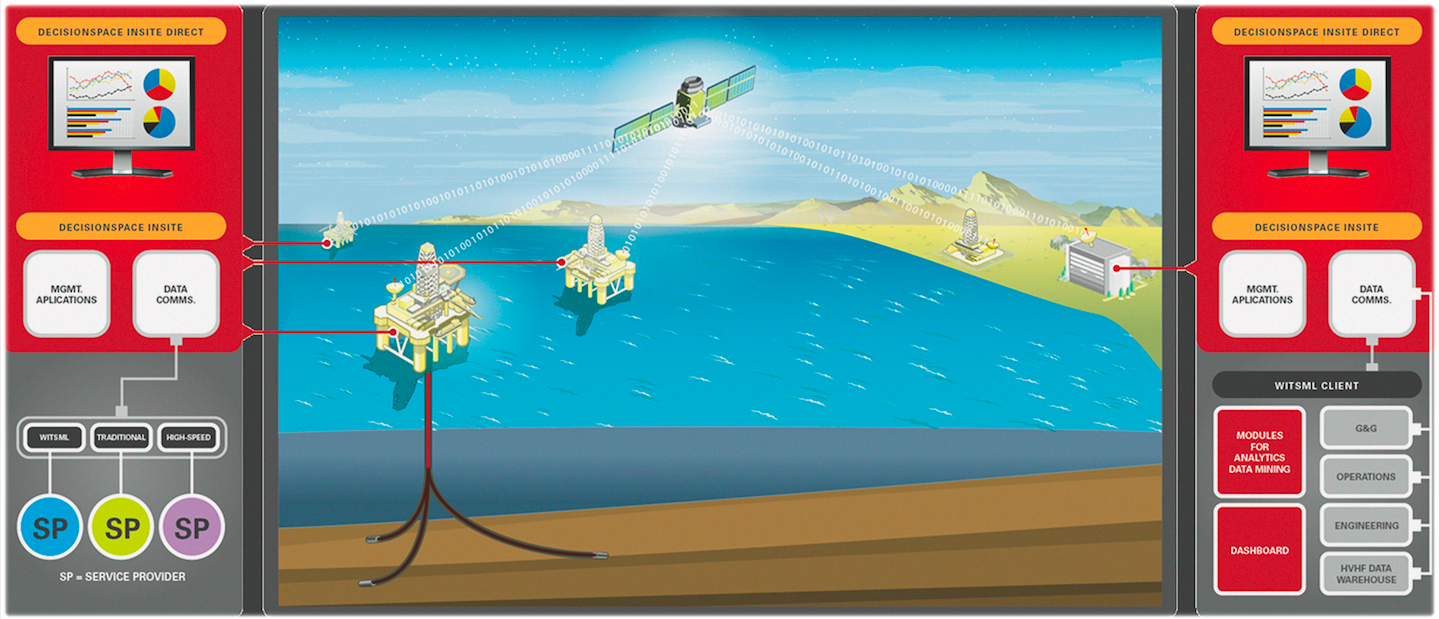Real-time information has been used for quite some time in the E&P industry to help improve the safety and efficiency of well construction. The benefits are well documented and today many companies share standards and create their own best practices, but it was not always that way.
In the year 2000 several industry leaders came together with a shared purpose – to bring commonalities to the way that real-time systems worked, simplifying interoperability and ultimately, enabling a broader, richer set of technologies. Those companies included Baker Hughes, BP, Chevron, ExxonMobil, NorskHydro, Halliburton, Schlumberger, Shell and Statoil.
Standardised approach
Each company was developing or utilising real-time systems, but their solutions were propriety to their own needs. They realised there was a need for a common language to communicate well site information and soon after, Wellsite Information Transfer Standard Markup Language (WITSML) was conceived. Their primary reasons for creating a standardised approach to exchanging drilling information were:
- to facilitate energy companies to leverage their investment in highly instrumented fields and to enable new capabilities for automation and optimisation that would otherwise be impossible or difficult to achieve;
- to reduce the cost of information exchange between software applications within an operating company and between operating companies, joint ventures, partners, contractors, and regulatory authorities;
- to reduce the cost of replacing or substituting software which results in improved functionality.

The group decided they needed an organisation to help facilitate the development of this standard and turned to Energistics. Energistics serves as the facilitator, custodian and advocate for the development and adoption of technical open data exchange standards in the upstream industry.
Landmark lead the way
Landmark, a Halliburton business line, was a founding member in the development of the WITSML standard and continues to lead and develop innovative software solutions that incorporate WITSML. One of the first of such software tools was OpenWire®, which integrated WITSML data into the OpenWorks® geosciences project data management system. It enabled Landmark’s interpretation and geological software to utilise data collected in real-time as both offset wells, and also in near real-time workflows.
The first version of this product was introduced based on the early work around the WITSML standard. It has undergone several upgrades and changes and now supports OpenWorks and EDM™ drilling engineering-based workflows.
Landmark developed the first WITSML server in the early 2000s. Soon after, Halliburton’s Sperry Drilling business line introduced the server to allow real-time data to be drawn out of their databases for use in WITSML client-enabled workflows.
Today, Landmark offers at least seven technical applications and processes that utilise WITSML processes and solutions. The company continues to develop and support the use of WITSML and is in the process of unifying all of its WITSML technology into a single tool that supports any of its technical databases and integration workflows. This product is based on the latest version of WITSML, 1.4.1, which provides important improvements in cross-company collaboration; and while Halliburton is also active in the other Energistics-based data standards, such as PRODML and RESQML, it is WITSML that defines Halliburton as a leader in the use of data standards.
Plug and play
One of the primary benefits of using WITSML is to allow operating companies and other consumers of real-time data to do a job with Schlumberger today and Halliburton tomorrow, while allowing the data flow to remain the same. This ‘plug-and-play’ approach to data transfer allows a user to have best practices for data use and data management without having to rely on proprietary solutions.
By making this an open standard, the knowledge base entry point can be lowered, which it allows for simpler operations when dealing with multiple wells and multiple service providers simultaneously.
The energy industry as a whole is facing a multitude of challenges: an increase in overall operations, more data and an aging workforce with limited replacement resources. Having a data standard that is simple to use means that years of experience are not required; anyone with a basic understanding of drilling operations can use a WITSML system for understanding the well data collected.
By freeing the most highly trained employees to spend less time finding and mining data, they are able to analyse the new data easier and more quickly to get a better and more complete picture of what’s happening beneath the Earth for current and future operations

Customers benefit
The first use of WITSML with customers is with real-time data: to determine what exactly is going on at the rig, making sure the right data is available to the right person at the right time – which is essential in most operations. Additionally, internal Halliburton services use the data that is collected in real-time to understand how effectively and efficiently the services provided are performing to ensure a high level of service quality.
Because all of the data is aggregated from multiple sources and service providers, it allows a customer to see a complete picture of the operation, activity or drilling environment. Operators can literally ‘see’ what the well is doing, and can not only make decisions in real-time, but can also make decisions about planning for future operations, based on current operations. A second use is to apply real-time data acquired during the drilling and logging of a previous well in the planning and development of the next well or field.
By combining historical or planned information with real-time acquired data a host of workflows can be enabled – improved reporting, real-time geosteering, drilling engineering in real-time, and so on. All of these processes utilise designed wells or drilling situations in concert with the data collected in real-time.
Using WITSML internally at Halliburton
In addition to simply using WITSML, Landmark has developed more than 15 data objects for internal purposes, most recently to solve a data flow issue between three fracturing service product lines within Pinnacle, Halliburton’s fracture diagnostic and reservoir monitoring technology.
The challenge Landmark faced was to improve the effectiveness and reduce the uncertainty of stimulations. Microseismic data is the only direct measurement of fracture dimensions away from the wellbore. Being able to visualise in real-time how the formation responds to stimulations in the context of basin scale geoscience environment enables us to understand the attributes of a fracture and what changes to make to the current or next stimulation stage. Understanding how the reservoir responds and what adjustments to make can ultimately improve production through maximising stimulation reservoir volume and also minimise treatment costs.
For example, a DecisionSpace® stimulation program was developed whereby new objects were created that worked within the WITSML system to share microseismic data from Pinnacle, treatment data from fraccing services, and geological data from the OpenWorks database. These systems use the new objects to talk to each other, using existing WITSML servers and WITSML clients.
Within Energistics, a new Microseismic group has recently been formed to address this same problem and Halliburton works closely with this work group to ensure that their learnings from this fracturing data communications process are captured in the open version of a microseismic data exchange process.
In addition to WITSML, Halliburton continues to use any communication protocols, including proprietary ones, in support of its services and workflows. Processes for geosteering, effective hole cleaning and efficient drilling are among them. New technologies and solutions are constantly under exploration, to encourage maximum information sharing, thereby promoting safe and efficient operations.
Future looks strong
The future of the WITSML standard is strong; of the thousands of wells Halliburton works on every year, about half of them deliver data in WITSML. The vast majority of contracts in place for Halliburton specify that data must be delivered in WITSML, and contracts have been won based on WITSML-enabled solutions.
Adoption of WITSML and other Energistics standards are anticipated to increase and ultimately become universally adopted, as operators determine that data is a critical aspect of well construction and can have a profound effect on the company’s return on investment for drilling and completion operations.





